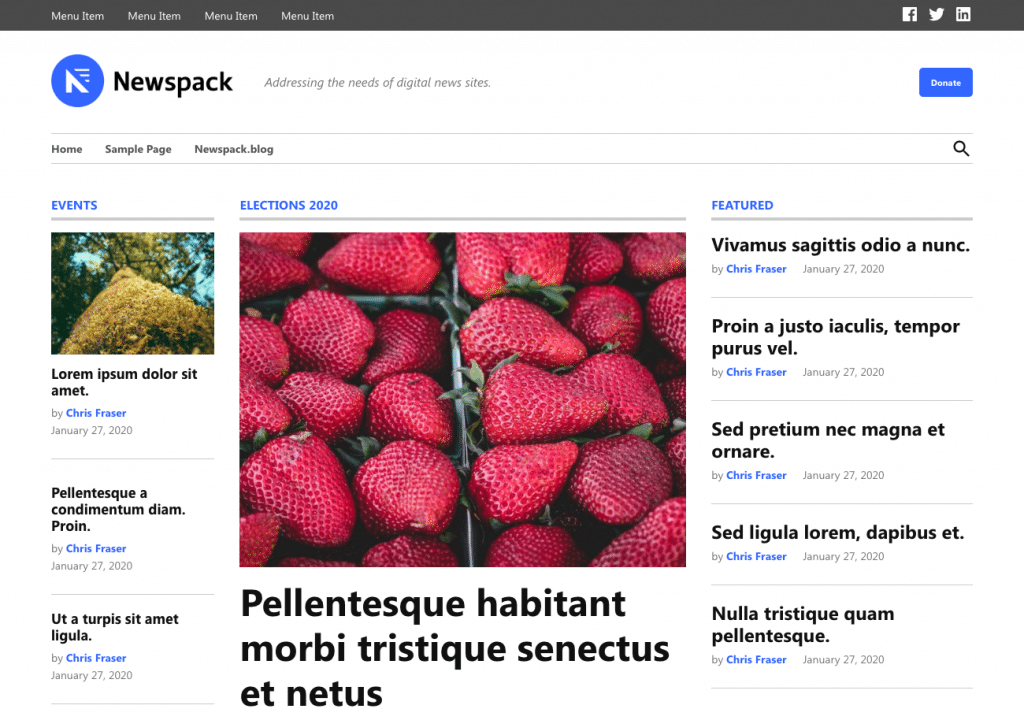
Thinking of building a proprietary CMS? Read this first.
“We’re not like any other media organisation; we need something special.”
This is something we hear time and time again from publishers. And it’s understandable. When you’re grappling with adtech, complex newsrooms and data regulation, it’s easy to feel like there’s no existing solution on earth that can fulfil your technology brief. So the obvious answer seems to be to build a proprietary CMS.
But for most digital publishers, the risks of building bespoke software far outweigh the benefits.
The dangers of building a proprietary publishing CMS
To a certain extent, publishers’ fears are warranted. There is no cookie-cutter content management system that can meet the unique needs of every media business. But building a proprietary CMS is not the only solution to this challenge.
It’s not just the feeling of ‘specialness’ that is driving these momentous tech decisions. An increasing number of publishers are latching onto the idea of their CMS as a source of revenue. It’s why the likes of Washington Post and Vox are investing staggering sums on developing their respective platforms ArcXP and Chorus.
But this trend of major media outlets developing their own software is actually a form of self harm. The ‘let’s create our own product and make a buck or two’ strategy isn’t the route to a sustainable publishing industry. Or even a safe bet for the creators. Proprietary CMSs are rigid and prohibitively expensive. Ultimately, they threaten to leave businesses behind if (or more likely when) technology continues to evolve at its current pace.
What alternatives are there to proprietary publishing tech?
There is far less risk and way more opportunity with open source tools.
In fact, we’d go as far to say that a sustainable publishing industry relies on opensource. In 2020, Forbes ran a series explaining why open source tools are so crucial to innovation and the dangers that accompany proprietary profiteering. And is it truly profiteering when only a tiny number publishers can actually afford the exorbitant licensing costs of ‘special’ proprietary software?
Having developed and collaborated with scores of digital publishers across the globe, we’re firmly convinced that WordPress remains head and shoulders above any other CMS for news organisations.
Safe might not be sexy but neither are product development and vendor cost blowouts. We’ve performed enough rescue missions to know where proprietary platforms can derail publishers.
Which publishers use WordPress?
While publishers like Vox might deem their empires too unique for the world’s most trusted open source platform, plenty of others function perfectly well without reinventing the wheel.
Aside from the millions of smaller publishers using the platform, Reuters, Time and Newscorp are just some examples of complex digital publishing organisations that are powered by WordPress.
Australia’s biggest media group, Nine Entertainment, recently won an International News Media Association (INMA) award for creating newsroom efficiencies. Their new flexible publishing tool, Ink, is still in its infancy yet has already resulted in a 60% reduction in newsletter production time and a 25% increase in tags for Nine’s leading title, The Australian Financial Review. All of this was achieved on the shoulders of open source champion, WordPress.
Making WordPress work for complex publishing businesses
What people don’t seem to understand is that WordPress can be optimised for complex workflows. We do it all the time. It’s just that many developers don’t know how or simply don’t want to. Instead, they end up creating a wildly complex publishing architecture.
It’s one of our biggest frustrations.
Why do publishers create frankenbeasts to solve problems that hundreds of others have faced (in one form or another) before?
Do we really need 10 ‘special’ versions of the same thing? Just think of how much money is wasted when 10 different publishers brief 10 different agencies on 10 different newsletter templates.
This is a prime example of threatened publishers thinking small (and short term) — and it risks sabotaging an already fragile industry.
In our experience, proprietary decisions often stem from misguided agencies or tech teams that haven’t fully grasped the true capabilities of open source. But these decisions aren’t sensible or sustainable.
Technology should never be complicated
Instead of patting themselves on the back for inventing another flashy new gizmo and gadget, publishers should intead be asking ‘how will this simplify my business?’ If it doesn’t, then they’re just adding to the chaos.
The Code Company’s model has always been ‘anti-complexity’. How can we deliver the most impactful business results in the simplest possible way? The most powerful transformations are usually the result of simple (open-source) software, smartly executed and aligned to core business objectives of that particular organisation.
The future of open source for news publishers
The arrival of Newspack in 2019 promised the perfect solution. Created by Automattic, Newspack is marketed as a ‘website in a box’ that provides affordable WordPress newsrooms for small to medium digital publishers. Newspack essentially works as a curator of common plugins for news publishers.
READ MORE: Test driving online publishing platform Newspack
It’s a good solution for startups or smaller publishers that lack development capabilities because 80% of the basic work is done. Yet because Newspack isn’t capable of deploying highly customised or bespoke digital experiences, it’s sometimes easier to build what you really need from scratch.

It feels like they’re close but not quite there yet. So while the industry waits for Newspack to deliver, how can publishers operate more sustainably?
Sustainability starts with a shift in mindset and the courage to think big
What the media industry needs more than ever is collaboration. Publishers working together and building news-centric solutions that can be shared using an existing open source tool.
WordPress has a vast and talented community of users with immense knowledge and experience. Imagine the strength of a news industry where publishers laid their egos aside and shared that knowledge for the greater good.
It may sound utopian, but this collaborative thinking is the very reason WordPress exists and continues to thrive.
“There are more companies genuinely and altruistically contributing to growing WordPress than ever before.” – Matt Mullenweg
The Five for the Future movement has successfully driven collaboration among WordPress users since 2014. Perhaps it’s time for the newly formed News Product Alliance to launch a similar campaign for the media community?
No one can deny that the news industry is evolving at unprecedented speed. It’s no wonder publishers are seeking fresh solutions. But if we tackle these challenges collaboratively, we might just survive long enough to report some good news.
And that really would be special.

